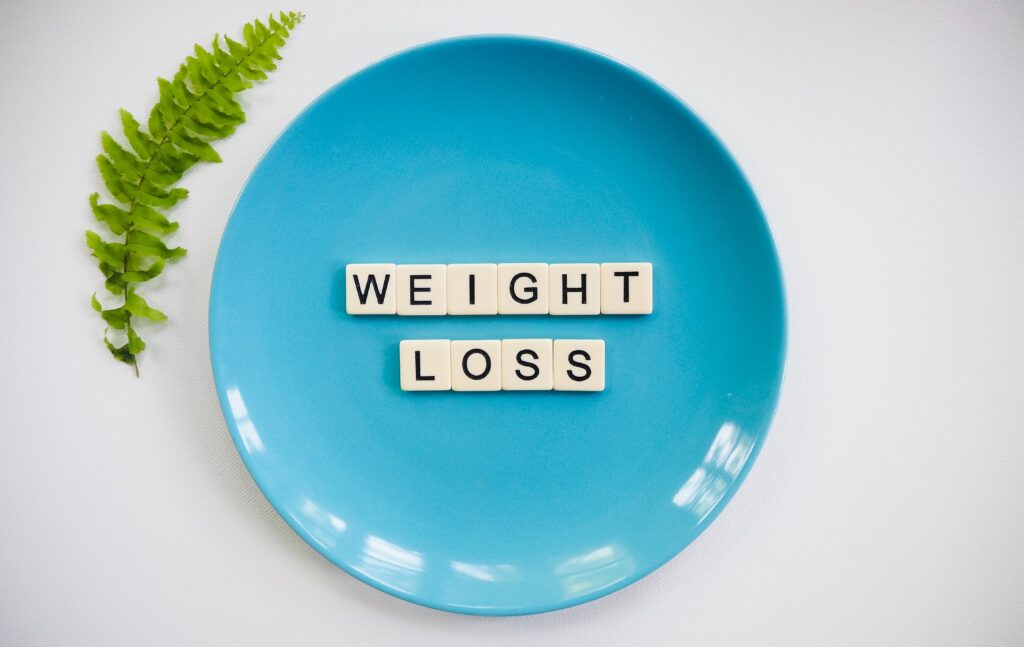The calorie deficit diet is a straightforward and effective approach to achieving weight loss by consuming fewer calories than your body expends (see sample diet below). At its core, it hinges on the fundamental principle of creating an energy imbalance in favor of calorie expenditure, resulting in the gradual shedding of excess pounds.
Understanding the calorie deficit diet begins with recognizing the significance of Basal Metabolic Rate (BMR). BMR represents the minimum number of calories your body requires to sustain vital functions, such as breathing, circulation, and cell maintenance, while at rest.
By grasping this concept, you gain insight into your body’s baseline calorie needs. Portion control emerges as a key player in the calorie deficit diet. It allows you to navigate the delicate balance between satisfying your nutritional requirements and creating the necessary calorie deficit for weight loss.
Understanding Your Calorie Needs
To embark on a successful calorie deficit diet, it’s crucial to have a comprehensive grasp of your calorie requirements. This understanding starts with determining your Basal Metabolic Rate (BMR), which represents the minimum number of calories your body needs to sustain its fundamental functions while at rest.
Calculating your BMR can be accomplished using various methods, including online calculators and mathematical formulas that take into account factors such as age, sex, weight, and height.
These tools provide a baseline estimate of your daily energy needs, which serves as a fundamental building block for your calorie deficit journey. But the intricacies of calorie requirements extend beyond BMR.
I found this calculator that will estimate your daily calorie requirements for losing, maintaining, and gaining weight.
Total Daily Energy Expenditure (TDEE) enters the equation, encompassing your BMR as well as the calories expended through physical activity and daily life. Determining your TDEE is pivotal because it establishes a more holistic view of your calorie needs.
It accounts for the calories burned during activities like exercise, walking, and even fidgeting, providing a more accurate estimate of your daily energy expenditure. Once you’ve uncovered your TDEE, the next crucial step is defining an appropriate calorie deficit goal.
A safe and effective calorie deficit typically falls within the range of 500 to 1000 calories below your TDEE. This gradual reduction in calorie intake promotes healthy and sustainable weight loss.
Going beyond this range may lead to rapid weight loss, but it can also carry health risks and be challenging to maintain over the long term. Understanding your calorie needs for a calorie deficit diet involves calculating your BMR, determining your TDEE to account for activity levels, and setting a realistic calorie deficit goal that aligns with your weight loss objectives and overall health. By mastering these fundamentals, you lay the foundation for a successful journey towards achieving and maintaining a healthier weight.
Implementing a Calorie Deficit Diet

Implementing a calorie deficit diet involves a series of practical steps and lifestyle adjustments to ensure that you achieve your weight loss goals safely and effectively. First and foremost, it’s essential to emphasize the importance of gradual changes and setting realistic expectations for your weight loss journey.
While the allure of rapid results can be tempting, it’s crucial to remember that sustainable weight loss is a gradual process. Setting attainable goals not only makes the journey less daunting but also increases your chances of maintaining your target weight in the long run.
To navigate the calorie deficit diet, tracking your calorie intake becomes a pivotal tool. Utilizing resources like mobile apps, food journals, or measuring cups and spoons empowers you to monitor the number of calories you consume accurately.
This practice brings awareness to your eating habits and helps you make informed choices. Mindful eating plays a central role in portion control and calorie management. Employing techniques such as using smaller plates, reading food labels, and prioritizing nutrient-dense foods encourages mindful choices.
By paying attention to the quality and quantity of what you eat, you can enjoy satisfying meals while staying within your calorie limits. Meal planning and preparation are essential strategies to stay on track and prevent impulsive, calorie-rich choices.
By planning your meals and snacks ahead of time, you’re better equipped to make health-conscious decisions and avoid reaching for unhealthy options when hunger strikes.
Implementing a calorie deficit diet hinges on gradual changes, realistic expectations, and meticulous calorie tracking. Mindful eating practices, portion control techniques, and the adoption of meal planning and preparation contribute to a successful calorie deficit journey. By incorporating these strategies into your daily life, you’ll be well on your way to achieving your weight loss goals and nurturing a healthier lifestyle.
Tips for Making Calorie Deficit Work
Achieving success with a calorie deficit diet involves more than just calorie counting. Here are some valuable tips to help you navigate this journey:
Focus on Whole, Unprocessed Foods: Prioritize the inclusion of whole foods in your diet, such as fruits, vegetables, whole grains, and lean protein sources. These choices not only provide essential nutrients but also enhance satiety, making it easier to manage your calorie intake.
Embrace Healthy Fats: Incorporate sources of healthy fats like nuts, avocados, and olive oil into your meals. Healthy fats not only contribute to a feeling of fullness but also aid in the absorption of fat-soluble vitamins, ensuring a balanced and nourishing diet.
Stay Hydrated: Adequate hydration is vital for overall well-being and can also help curb cravings. Drinking plenty of water throughout the day supports digestion and may prevent overeating during meals.
Get Regular Exercise: Physical activity is a valuable companion to your calorie deficit diet. Exercise not only burns calories but also boosts your Total Daily Energy Expenditure (TDEE). Regular workouts contribute to improved fitness and overall health.
Don’t Skip Meals: Skipping meals can lead to unstable blood sugar levels, which may result in overeating later in the day. Maintaining regular meal times helps stabilize your energy levels and prevents excessive calorie consumption.
Find Support: Seek encouragement and support from friends, family, or online communities that share your goals. Sharing your journey with others can provide motivation, accountability, and valuable insights.
Incorporating these tips into your calorie deficit diet not only enhances your chances of success but also promotes a balanced and sustainable approach to weight management.

Overcoming Potential Challenges with the Calorie Deficit Diet
Embarking on a calorie deficit diet can come with its fair share of challenges, but with the right strategies, you can navigate these obstacles successfully. One of the most frequent challenges people face when reducing calorie intake is dealing with hunger pangs.
To manage these, consider engaging in distracting activities when you feel the urge to snack between meals. This can include going for a short walk, practicing deep breathing exercises, or sipping on herbal tea.
Additionally, keeping healthy snacks on hand, such as raw vegetables or a piece of fruit, can help curb hunger without compromising your calorie goals. Cravings, especially for high-calorie or sugary foods, can be a stumbling block on your calorie deficit journey.
To tackle cravings effectively, start by identifying their triggers. Is it stress, boredom, or specific situations that prompt these cravings? Once you’ve pinpointed the triggers, practice mindful eating to address them.
Slow down during meals, savor each bite, and focus on the flavors and textures of your food. This can help reduce the intensity of cravings and prevent overindulgence. Social situations often involve larger portions and a variety of tempting foods.
To maintain portion control in such scenarios, consider strategies like sharing dishes with a friend, using a smaller plate, or pre-portioning your food. It’s also essential to communicate your dietary preferences with your host or restaurant server to ensure you have suitable options.
Remember, it’s okay to indulge occasionally, but practicing moderation is key. Lastly, it’s crucial to maintain a positive mindset throughout your calorie deficit journey. Focus on progress rather than perfection and celebrate small victories along the way.
Weight loss can be a gradual process, and setbacks may occur, but by acknowledging your achievements and staying committed to your goals, you can overcome challenges and achieve success in your pursuit of a healthier lifestyle.

Sample Calorie Deficit Meals for a Day
To provide you with a practical insight into a calorie deficit day, we’ll outline a balanced meal plan with estimated calorie counts. Keep in mind that these are just examples, and you can adjust them to your preferences and dietary needs while staying within your chosen calorie deficit.
Breakfast:
Start your day with a nutrient-rich breakfast that energizes you for the morning. Consider a bowl of oatmeal topped with fresh berries and a dollop of Greek yogurt. This combination offers fiber, protein, and essential vitamins. The estimated calorie count for this meal is around 300-350 calories.
Lunch:
For a satisfying midday meal, opt for a salad loaded with colorful vegetables, lean protein like grilled chicken or tofu, and a drizzle of olive oil-based dressing. Accompany it with a small whole-grain roll. This balanced lunch provides approximately 400-450 calories.
Afternoon Snack:
Keep your energy levels steady with a snack like a handful of almonds and a piece of fruit. Almonds offer healthy fats and protein, while the fruit provides natural sweetness and fiber. This snack contributes around 200-250 calories.
Dinner:
For dinner, prepare a portion of baked salmon or a plant-based protein alternative like lentils. Pair it with steamed vegetables and a side of quinoa. This well-rounded dinner provides protein, fiber, and essential nutrients, totaling approximately 400-450 calories.
Evening Snack:
If you find yourself hungry in the evening, consider a light snack such as a small serving of Greek yogurt with honey or a cup of herbal tea. This option contributes around 100-150 calories.
In this sample day, we’ve emphasized nutrient balance and portion control while staying within the chosen calorie deficit. Keep in mind that these are just examples, and you can adapt your meals to your tastes and preferences. The estimated calorie range for this day falls within the desired calorie deficit to support your weight loss goals.
A calorie deficit diet, coupled with an understanding of your Basal Metabolic Rate (BMR) and Total Daily Energy Expenditure (TDEE), serves as a reliable strategy for sustainable weight loss.
By calculating your BMR and determining a safe calorie deficit within the range of 500-1000 calories below your TDEE, you can achieve your weight loss goals effectively. However, it’s essential to approach this dietary plan with a focus on mindful eating and portion control.
While the numbers matter, the quality of your food choices matters just as much. Prioritizing whole, nutrient-dense foods and maintaining a balanced diet should be integral to your journey.
Remember that a calorie deficit diet should complement a healthy lifestyle, which includes regular physical activity, staying hydrated, and managing stress. By incorporating these elements into your weight loss strategy, you can optimize your chances of long-term success and better overall well-being.


